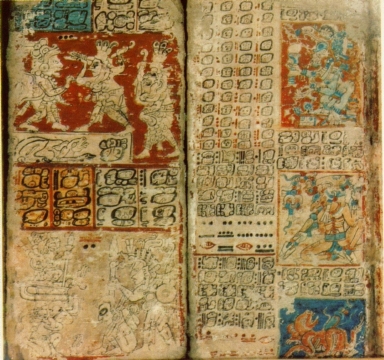Detail View: Maya Art and Architecture: Page from the Dresden Codex

|
Filename:
|
dresden_codex.jpg
|
|
Title:
|
Page from the Dresden Codex
|
|
Creator:
|
Unknown
|
|
City or Region:
|
Dresden
|
|
Site:
|
Saxon State Library
|
|
Country:
|
Germany
|
|
Language:
|
Spanish
|
|
Subject:
|
Codex
|
|
Subject:
|
Manuscript
|
|
Description:
|
Only four Mayan manuscripts still exist worldwide, of which the oldest and best preserved is the Dresden Codex, held in the collections of the Saxon State and University Library. The manuscript was purchased for the Dresden court library in 1739 in Vienna, as a “Mexican book.” In 1853 it was identified as a Mayan manuscript. Consisting of 39 leaves, inscribed on both sides, and approximately 358 centimeters long, the manuscript originally was folded in an accordion-like manner. The chalk-coated writing material, amatl, is a paper-like matter produced from fig-tree fiber by means of soaking and beating. The codex depicts hieroglyphs and numerals and figures, and contains ritual and divination calendars, calculations of the phases of Venus, eclipses of the sun and moon, instructions relating to new-year ceremonies, and descriptions of the locations of the Rain God, which culminate in a full-page miniature showing a great deluge. The preeminent researcher working with Mayan codices in the 19th century was Ernst Förstermann (1822–1906), royal librarian of the Electorate of Saxony and director of the Saxon State and University Library. Förstermann elucidated the numerical, calendrical, and astronomic systems in the codex and determined that the deities, numbers, and day names in it related to the 260-day Mayan calendar. Förstermann also used the codex to make important contributions to scholarly understanding of the Mayan Long Count calendar, which counted days from the Mayan creation date.
|
|
Course Number:
|
M101
|
|
Instructor:
|
John Doe
|